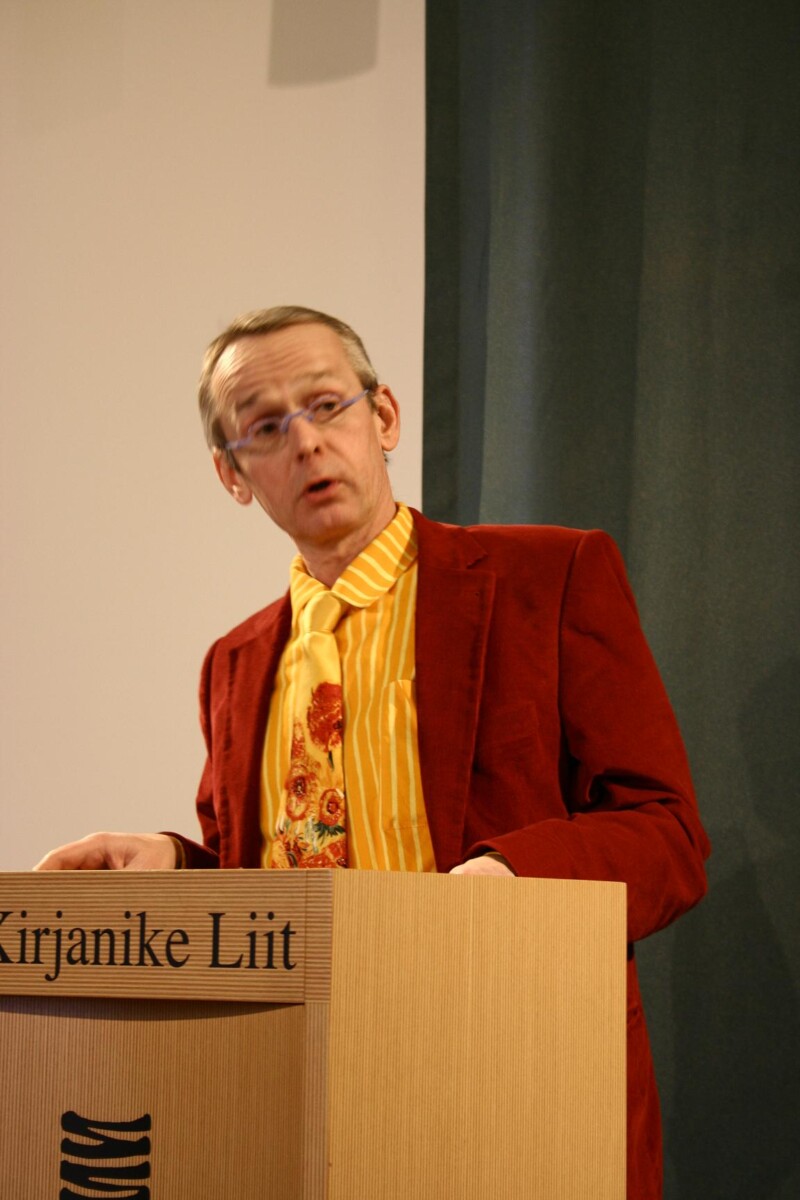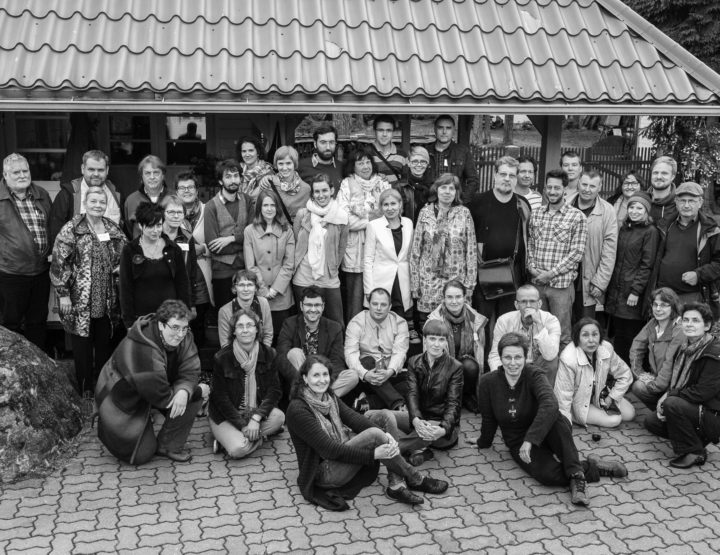Professor of Groningen University and a prominent Estophile, Cornelius Hasselblatt, whose 869-page Geschichte der estnischen Literatur. Von den Anfängen bis zur Gegenwart was published in December 2006, tells Kalev Kesküla how it all came about.
Geschichte was issued by the prominent German publisher of academic and scientific literature, Walter de Gruyter. In the publisher’s own words, this is the first “modern treatise of Estonian literature in a world language” that is not translated from Estonian, and thus constitutes a “glance from outside”.
*
How much Estonian literature have you actually read? Tammsaare and Luts, or perhaps also, for example, Metsanurk, Jakobson, Mälk and Gailit?
Certainly more than the two classics you mentioned first. As for Luts, his famous Spring is in fact of secondary importance to me. However, its impact on the Estonian intellectual landscape is obvious, so naturally I have examined the novel. I have read Tammsaare quite a lot, and grown very fond of him, increasingly so.
My main problem is that I began reading Estonian literature 23 years ago when I was 23. At that age, an ordinary Estonian reader has already read many Estonian books. I lagged behind, and will probably never properly catch up. Still, I have read four novels by Mälk, and three or four by Gailit, plus his short stories. The number of authors on my bookshelves is not small, from Aspe, Barker, Berg… Hint… Kaplinski, Kaus, Kivikas, all of Kross…Liiv, Meri, Mutt, Park, Põder… Ristikivi, Saat, Semper… Traat, Tuglas, Unt, Vahing… Õunapuu…to Eia Uus.
I have read them all, and more. Plus, of course, poetry. I will not reveal the names I haven’t read – let the reviewers find that out for themselves.
Can you name some authors who are closer to you than others?
Quite a few writers have become ‘close’ over the course of twenty years. I genuinely fell for some books, such as Gailit’s Nipernaadi or Kitzberg’s Werewolf. The list of poets is impressive. But you cannot describe the literature of a country without relying on texts, delving deeply into the effusion of words, or else the result will be shallow and false.
The annotation of the book says that you start with oral folk poetry and examine the “development of Estonian-language texts in the 18th-19th centuries”. The earlier German men of letters are usually left outside the category of ‘national literature’. Do you think it sensible to draw a distinction between Estonians and Germans?
Of course not! I mean we can differentiate these two nations, but not from the point of view of Estonian literature, of texts in the Estonian language. That would be really silly, damaging, and simply wrong. I’m sure it is not my personal opinion that literature is written with ink and not with blood. Still, not everyone has understood that.
I focus on texts in Estonian. These texts have formed Estonian literature, and I see no reason to scrutinise the origin of those people who wrote in Estonian. Why should I? It does not matter; as far as I am concerned, the authors of those texts could have been apes. After all, we do not often know what language someone used when demanding his milk or uttering swear words for the first time. Or in what language his parents read bedtime stories. Why should genetic origin influence anything when we are talking about intellectual production. It’s some kind of 19th century racist leftover.
Estonian poetry started with folk poetry and found a different form with Reiner Brockmann in 1637, and prose began about one hundred years ago with Christian Quandt or Anton Thor Helle. Maybe we should not use the term ‘national literature’ at all; it is enough to say ‘Estonian literature’.
Which histories of literature did you use while writing your own? Any Soviet sources, or are these too vague, too full of euphemisms?
I have no idea whether I have always understood the euphemisms; as a foreigner I have probably missed some. On the other hand, I’m not so stupid as to be totally unable to read Soviet texts and understand their meaning. Any text must be critically read, analysed and interpreted. It is sometimes assumed here that no foreigner can possibly understand anything that has happened or is going on. This is not true.
In the course of the last twenty-five years, I have accumulated an extensive library of Estonian literature and its history. Most important is still reading books and letting them influence me. This is how the general picture gradually took shape.
What is new in your book, different from what local literary historians have produced?
Good question. I do not know. Maybe others should answer that. Essentially, my book was written for foreign readers, meaning that I have explained things already known to Estonians. Still, when I wrote the book, it occurred to me from time to time that this or that might also be of interest to Estonians.
One thing I noticed: the difference between east and west is smaller than I thought, i.e. the problems tackled by Estonian writers are more or less the same as in other countries. So the Estonian culture is less exotic than expected (or occasionally perhaps hoped) – we all come from the same planet.
Who will read this 900-pager?
Everybody interested in Estonian culture. Or in Estonia in general. Or in the diversity of European culture. Or all Estonians who can read German. Or my students (one or two who study Estonian literature each year at Groningen). I have no idea. I am wondering too. The bulk should not put people off, since the text is divided into chapters (53) that, in turn, are sliced into sub-sections. It also has an extensive bibliography and index that makes it easy to find just what you want: Setu folk poetry or Kitzberg’s dramas or poetry by Contra…
© ELM no 24, spring 2007



